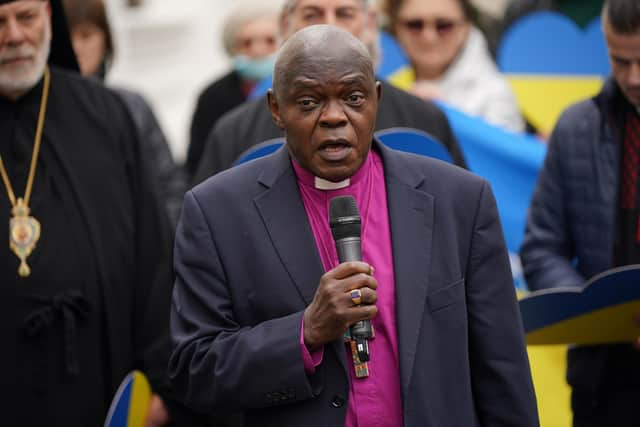Why case against John Sentamu is contrary to common justice: Archdeacon John Barton
The Archbishops of Canterbury and York can be deluged by correspondence. I know. I’ve worked for both and have seen it. A few letters may be copies of those addressed to others, which the sender thinks may interest them. Copying a letter to someone in authority can also be a device to warn the primary recipient that they had better take it seriously.
Archbishops may receive duplicates of letters written to bishops, other clergy and church officials, who are outside their jurisdiction. Until very recently, they could not intervene in a diocese other than their own. If they received a formal complaint about clergy, they would explain the correct complaints procedure.
Advertisement
Hide AdAdvertisement
Hide AdMatthew Ineson wrote to the Bishop of Sheffield on June 1, 2013. He copied his letter to others, including the Archbishop of York, without asking them to comment, advise, take action, or even acknowledge receipt. Characteristically, the Archbishop did respond, showing his pastoral concern for Matthew.


Matthew, who is now himself ordained in the Church of England, relates a harrowing experience of sexual abuse when he was a teenager in the 1980’s, at the hands of a Vicar who, the day before he was due to face charges in Court in 2017, committed suicide.
It’s a dreadful chain of events, too complex to repeat here.
There is uncertainty over the role played by some of Matthew’s superiors, but no doubt that he wrote twice to the Bishop of Sheffield (who is now Bishop of Oxford) in 2013, complaining that the Church had failed to help him. The second of those two letters was the one copied to Archbishop Sentamu.
Advertisement
Hide AdAdvertisement
Hide AdIn the past, the Church undoubtedly failed to understand or acknowledge the evils of paedophilia and victims’ need of support. Like other organisations, we have been inexcusably slow to wake up to the enormity of the damage done to young people by abuse.
Recent developments are trying to put this right. Everyone who carries responsibility in the Church, whether clergy or lay, is now required to undergo continuous training in what is called Safeguarding. Although I’m retired, I’ve had to attend several courses, the latest lasting 12 hours, being taught how to spot young people and vulnerable adults in danger, and what to do about it.
Some former victims still don’t trust us and have campaigned successfully to make safeguarding procedures independent of Church authorities. They reject the many attempts by the hierarchy to apologise, repeatedly trigger the formal complaints procedure, and call for bishops and archbishops to be sacked.
The Church is spending £6m a year centrally on safeguarding procedures, plus about £12m spread across the 42 dioceses, each of which employs up to five safeguarding officials.
Advertisement
Hide AdAdvertisement
Hide AdA victim or a suspect must now be referred to them, and they will have quasi-judicial authority, in addition to that held by the Police and Courts of the land.
In this respect, they have power over bishops and everyone else.
Safeguarding now trumps all other church laws and recognised practices. That was not the case in 2013 when ‘the’ letter was sent; safeguarding procedures were then part of diocesan structures and accountable to each Diocesan Bishop.
An independent Reviewer was appointed to look into Matthew Ineson’s case.
Advertisement
Hide AdAdvertisement
Hide AdJane Humphreys was Director of Children Services and Director of Adult Services for Teesside and although Matthew refused to co-operate with her, she has just produced a report. It says: “The Archbishop of York could have written to the Bishop of Sheffield to ensure he was responding to the survivor and ensuring he was being offered the necessary support. He should also have copied his letter to the survivor to the Bishop of Sheffield as well.”
This judgment equates to retrospective legislation, which is contrary to common justice.
Matthew Ineson had already initiated a complaint against Archbishop Sentamu under the Clergy Discipline Measure, alleging he failed to act on receipt of the copy letter. He repeated this in his evidence to The Independent Inquiry into Child Sexual Abuse. In neither case was his objection upheld, so it can only be inferred that the independent reviewer believes her opinion overrides all others.
Under the new protocol, the Bishop of Newcastle, in whose diocesan area Bishop Sentamu now lives, has publicly suspended him from voluntary duties and ordered him to meet her. Hindsight rules.
Advertisement
Hide AdAdvertisement
Hide AdApart from ‘the’ letter, Dr Sentamu invited Matthew, both informally and in writing, to meet him, in the hope of finding a constructive way forward. Sadly, these were also rejected.
John Barton is an Archdeacon and former Principal Adviser to John Sentamu